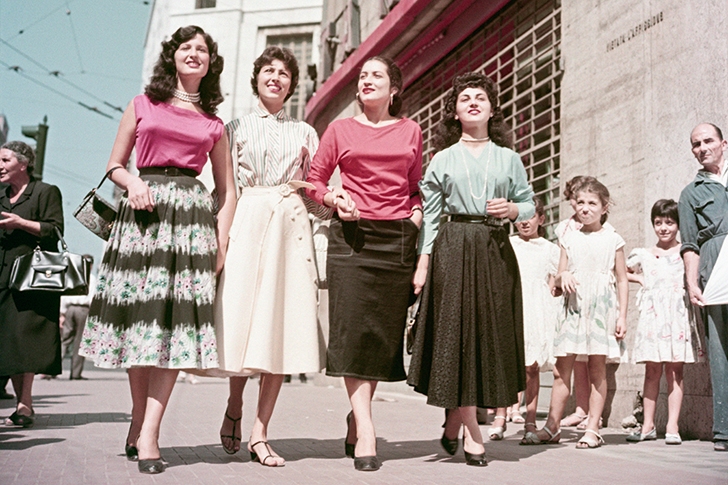Reading Elena Ferrante’s Neapolitan quartet is a heady experience. You not only see, hear, know her characters — you can almost taste them. The villain of the first of the four books, which follow the friendship of mercurial Lila and striving Lenù from childhood into their sixties, is Don Achille, an ‘ogre’ who sweats the smells of ‘salami, provolone, mortadella, lardo and prosciutto’. Lila herself, always wriggling free of the nets of others, is ‘skinny, like a salted anchovy’. Nino, loved by both Lila and Lenù, is ‘an anomalous, sweet fruit’. Naples itself, the backdrop to the books, acting as a succubus, pulling the characters back when they try to escape, stinks of the exhaust from Fiat cars, the roasted almonds of the street sellers, fried pizza from the cafés.
How do you put all that on stage? On the page, on the nearly 1,600 pages of My Brilliant Friend (childhood), The Story of a New Name (adolescence), Those Who Leave and Those Who Stay (young married life), and The Story of the Lost Child (maturity, success, bereavement), you lose yourself in Lenù and Lila, in six decades of slights, quarrels and alliances, triumph and betrayal, vendetta and omertà, feuds and petty hair-pulling. Can you do all that in just four acts over two evenings?
‘When you initially set it out like that,’ says Melly Still, director of the first theatre adaptation of Ferrante’s novels, ‘it doesn’t seem as if it’s possible. There’s this strange, wonderful experience, which I think is particular to reading. It becomes personal and consummate.
‘The role of theatre is very different, because you can’t put the novels on stage. A big long mini-series — a Netflix series — could do that. You can really explore all the detail. Theatre has a different role, somehow distilling the experience of reading.








Comments
Join the debate for just £1 a month
Be part of the conversation with other Spectator readers by getting your first three months for £3.
UNLOCK ACCESS Just £1 a monthAlready a subscriber? Log in